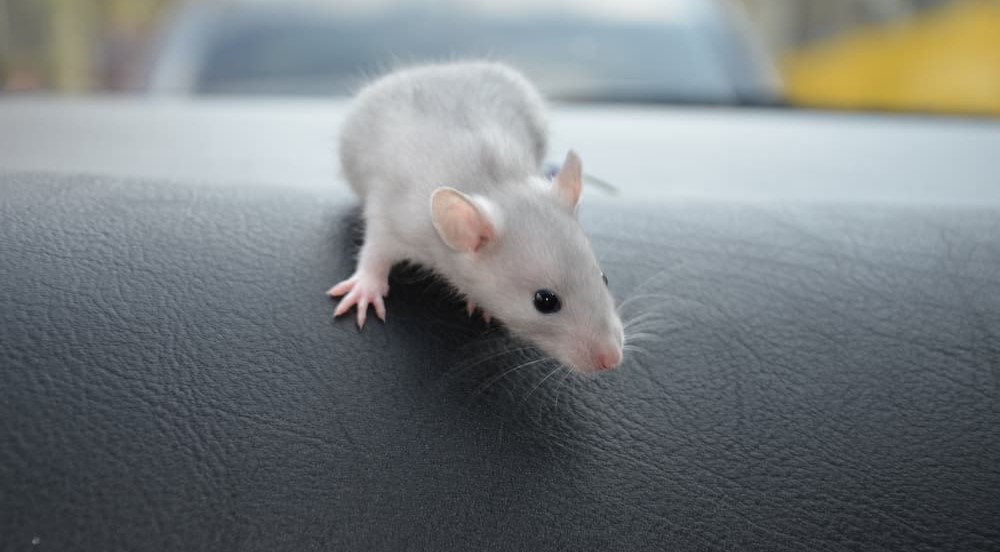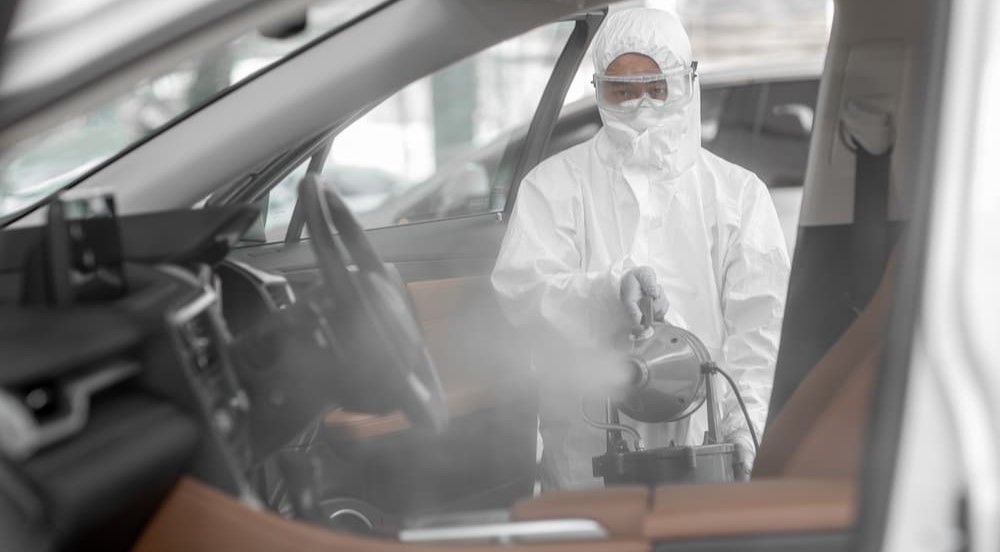Drivers investing in a 25-year-old conversion van don’t typically expect stellar gas mileage, but I still found myself mystified about the lackluster efficiency of my used 1999 GMC Savana 1500. While posting 10 or 11 MPG is a small price to pay for a vacation home on four wheels, the internet insisted that I should at least be getting closer to 14 or 15 miles out of every gallon. I spent a couple of weeks trying to track down the issue, investigated potential misfires, and even replaced the gas cap before I thought to pop the hood and take a look at the engine air filter. After removing the cover, I was met with a sight I’ll never forget. The small plastic box was stuffed with roughly 200 acorn shells that effectively cut off the engine from a fresh air supply. It seems that an enterprising mouse or chipmunk had set up shop while the van sat in storage, making itself at home and bringing a full winter’s worth of grub along to boot.
While your vehicle might be advertised as a four-, five-, or eight-passenger model, there’s no telling how many extra freeloaders might be along for the ride. From rodents and reptiles to bugs and birds, pests have a knack for finding their way into our cars, trucks, and SUVs. These infections can range from icky and inconvenient to downright dangerous or expensive as critters chew through wiring, power steering lines, and other essential components. This is why it’s so important to practice a little pest control as part of your normal automotive maintenance routine. Read on as we review some of the top tips for a pest-free vehicle, including good cleaning and parking habits, professional services, specialty products, and all-natural solutions that include an extra-spicy roll of tape.
Pick Your Spot
Parking your vehicle in a pest-free area can be one of the easiest ways to reduce the likelihood of an infestation. A clean, well-kempt garage provides a good start, but such enclosed spaces are only effective if they’re actually enclosed. Spend a little time inspecting your garage for any gaps around the windows or doors, paying close attention to the weather stripping that runs along the bottom or sides. An adult mouse can squeeze through a dime-sized gap, so watch for even the smallest cracks, breaks, or holes throughout your garage. Shut the garage door whenever possible, remove any cardboard, newspaper, or other potential nesting material, and don’t store garbage cans with food waste in the garage. If you don’t have access to a garage, try to avoid parking your vehicle around vegetable gardens, trash bins, or other areas where pests might congregate.
Keep It Clean
From resale value to safety, there are plenty of reasons to give your vehicle a thorough cleaning, but maintaining a well-kempt car is also one of the easiest ways to reduce the likelihood of some unwanted visitors. Discarded food can provide an easy meal for an enterprising pest, while accumulated junk, including clothing, trash, and tissues make the perfect nest for mice and rats. Clearing out your vehicle at least once a week and regularly vacuuming the interior should help prevent critters from making themselves home while also improving the overall driving experience. When cleaning your vehicle, don’t forget to check under the seats, behind the cushions, and inside the trunk, as these dark, scheduled areas are particularly attractive to nocturnal creatures.

Make It Extra Spicy
There are a lot of misconceptions surrounding rodents’ affinity for automotive materials. While some have suggested that the furry little fiends are drawn to the tasty, plant-based materials that are increasingly used to produce many of today’s vehicles, experts say that flavor isn’t always the primary incentive. According to the pest control experts at Terminix, rodents are inherently prone to chewing to prevent excessive tooth growth. Whether modern soy-based materials or pure old plastic, rodents will gnaw away at any materials that can help to scratch that biologically-driven itch. Aside from trying to keep vehicles stored in a relatively pest-free area, drivers can also invest in a roll of rodent-deterrent tape. In response to rodent-related complaints around its use of soy-based wiring insulation, Honda has introduced a line of rodent-deterrent tape that uses capsaicin to keep pests from going to town on your vehicle’s cords and cables. Capsaicin is the chemical compound that gives chili peppers their distinctive heat and is sure to ruin the appetite of any rodent looking for a quick bite.
Natural Solutions
Capsaicin-coated tape isn’t the only natural remedy that can be used to help keep your car pest-free. Rodents have an exceptionally acute sense of smell and, as such, are very sensitive to strong odors. Essential oils, particularly peppermint, clove, and cayenne oil, are simply too much for their little noses and can be weaponized to make your vehicle a less hospitable environment. You can try sprinkling essential oils around your car or deploying a well-soaked cotton ball around the cabin or under the hood. It’s important to note that this process must be repeated weekly as the smell wears off. In addition to these pest-fighting properties, peppermint oil is also said to reduce stress and anxiety, increase alertness, reduce negative moods, and even improve cognitive performance. While there’s not a lot of hard evidence to back up some of these claims, you’ll certainly be a lot less stressed if you’re not riding around in a car full of four-legged interlopers. Cedar shavings or sawdust can be another handy, all-natural solution to automotive pest control. Cedar gives off phenols, which are chemical compounds that can repulse or even kill rodents. Cedar is also known to drive away cockroaches, moths, fleas, and even some snakes while offering the added bonus of giving your vehicle a warm, woody scent.
Not-So Natural Solutions
When natural solutions just won’t do the trick, it’s time to call in the big guns. Plenty of traps, poisons, and treatments can help eliminate unwanted pests, though drivers searching for a less deadly solution can also opt for a sound-based repellent. Ultrasonic pest repellents emit high-pitched sound waves designed to ward off rodents while remaining imperceptible to humans, cats, and dogs. These devices usually have a very short range, so make sure they’re installed in a spot where they can be effective. Other non-lethal solutions include reusable traps, which can confine rodents within a container and allow them to be easily relocated to a more appropriate environment. If all else fails, you can always employ traditional poison-based traps, but it’s important to be careful when dealing with this sort of chemical warfare. Such traps should be removed whenever the vehicle is in use and kept far away from pets, children, and other curious minds.

Bug Off
Rodents aren’t the only creatures that are looking for a free ride aboard your vehicle. Insects can be another common automotive pest, especially for those who live in warmer climates. Cockroaches can quickly colonize a susceptible vehicle, while ambitious ants will bring the whole colony along for a free meal. Drivers should also be mindful of bed bugs that, despite the name, are happy to infest any upholstery-rich environment, especially one with many crevices and dark hiding spots. Everyone loves a good garage sale or a trip to the thrift store, but before you drag home that next must-have find, consider the potential pest-related implications. Bed bugs can easily hitch a ride on clothing, luggage, or furniture, so make sure to thoroughly inspect any foreign materials. Keeping your vehicle free of old food or half-empty cans of soda can go a long way towards deterring ants, as can parking your vehicle away from any obvious ant hills. If bugs do find their way into your vehicle, plenty of products on the market can be used to address the issue. Novacide is an aerosol insecticide that can be safely applied to a vehicle’s upholstery, but if you’re looking for a more natural solution, there’s always diatomaceous earth. Made from the fossilized remains of tiny aquatic creatures, this fine powder works on the microscopic level, damaging a bed bug’s protective outer shell and killing it within minutes.
Call In the Pros
If the problem spirals out of control, or you don’t have the stomach for serious pest control, you can always call the experts. Professional pest control companies can use insecticides, traps, vacuums, or even heat and cold treatments to address even the most extreme infestation. However, the service doesn’t necessarily come cheap at around $300. That might sound like a good chunk of change, but to some drivers, it might be money well spent if it means less face time with rodents, roaches, and other pests.
While we’ve reviewed some basic tips that should help make for a pest-free ride, the battle against bugs, rodents, and reptiles never stops. If you have a convertible that only gets called into service during the summer months or own a vehicle that tends to spend lots of time in storage, make sure to do a careful inspection before firing it up for the first time after a long hibernation. Pests love to camp out in a disused vehicle, so take a closer look at the tailpipe, air vents, air intake, air filter box, or any other area that might make for a good nesting spot. Giving the horn a little honk can also help scare away any creatures that might be catching a little shut-eye under the vehicle or cozying up against a warm engine block on a chilly day. With a little vigilance, some good cleaning habits, and the right decision-making, it’s relatively easy to keep unwanted guests from setting up shop in your vehicle.

